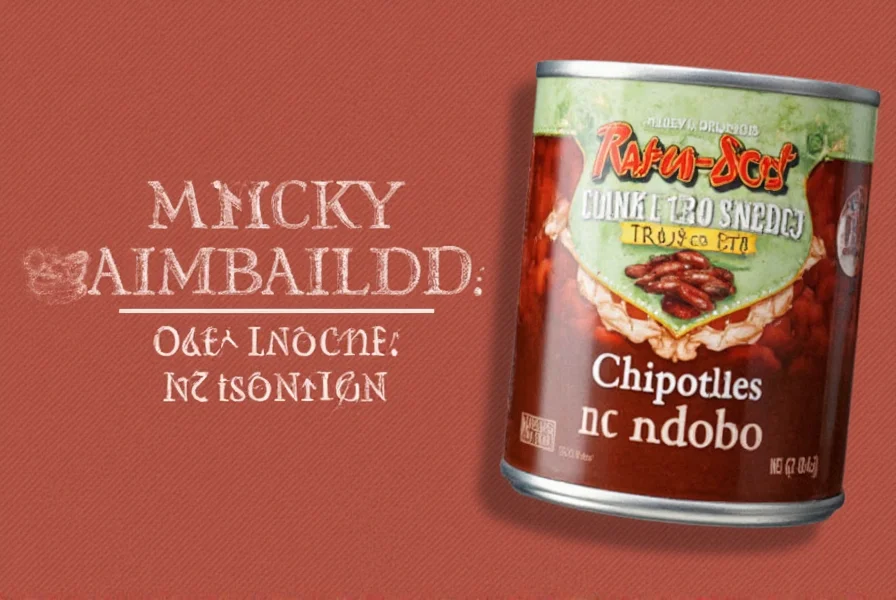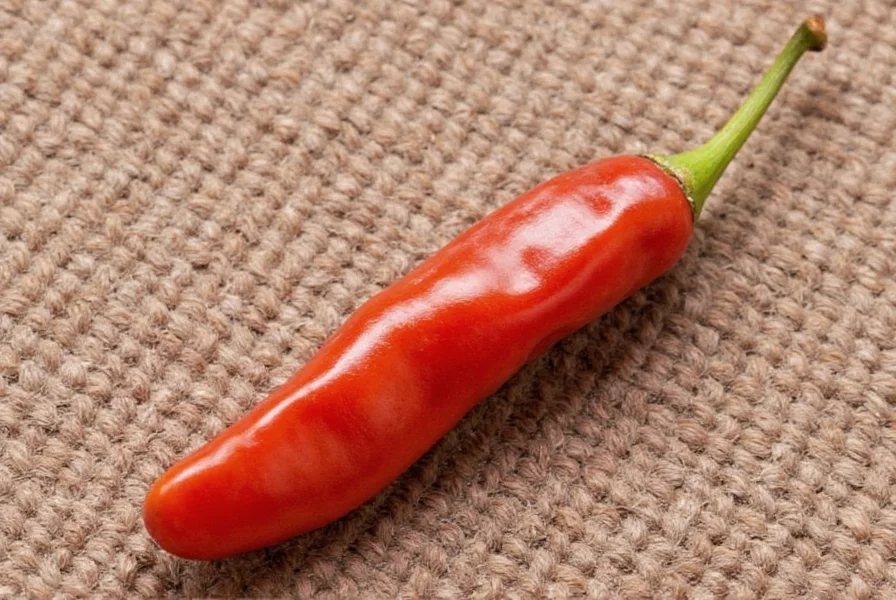Chipotle peppers are smoked and dried ripe jalapeños, originating from the Nahuatl word chilpoctli meaning "smoked chili." They're known for their distinctive smoky, earthy flavor with moderate heat (2,500-8,000 Scoville Heat Units) and are widely used in Mexican cuisine and global cooking.
| Pepper | Heat (SHU) | Flavor Notes |
|---|---|---|
| Chipotle | 2,500 – 8,000 SHU | Smoky, Earthy, Sweet |
| Jalapeño | 2,500 – 5,000 SHU | Fresh, Slightly Spicy |
| Ancho | 1,000 – 2,000 SHU | Sweet, Fruity, Mild |
| Hatch Green Chile | Varies (1,000–30,000 SHU) | Grassy, Tangy, Variable |
| Guajillo | 2,500 – 5,000 SHU | Berry-like, Tea-ish, Tangy |

Chipotles start as green jalapeños that are left to ripen into red ones before being smoked and dried. This process gives them their distinct flavor profile — earthy, spicy, and deeply complex. Unlike fresh jalapeños, chipotles have a rich, smoky depth that makes them incredibly versatile in cooking.
History and Origins
Long before chipotle peppers showed up in American fast-casual restaurants like Chipotle Mexican Grill (no relation), they were an integral part of ancient Mesoamerican cooking. Indigenous peoples developed the technique of drying and smoking chilies not only to preserve them but also to enhance flavor — a kind of early culinary alchemy.
Traditionally, chipotles were sun-dried and then slowly smoked over wood fires for days. Today, industrial production mimics that process using controlled ovens and dehydrators, but artisanal versions still exist — and many argue, they're worth seeking out.
How to Use Chipotle in Cooking
If you've ever bought a can labeled "chipotle in adobo," you've already got one of the most convenient forms of this smoky powerhouse. Let's break down how to use chipotle in various formats:
- Whole dried chipotles: Rehydrate them in hot water or broth before blending into salsas or mole.
- Ground chipotle powder: Sprinkle into rubs, stews, or homemade hot sauces.
- Chipotle in adobo sauce: Add a few spoonfuls to mayonnaise, dressings, chili, or grilled meats for instant flavor boost.
- Canned chipotles: Puree and mix with sour cream for a spicy dip, or stir into tomato-based sauces for complexity.
Pro Tip:
Start small — chipotle's smokiness can easily overpower other flavors. Taste as you go!
Types of Chipotle Products Available
| Type | Description | Best For |
|---|---|---|
| Whole Dried Chipotles | Original form; often sold in bags or loose | Making sauces, rehydrating for pastes |
| Ground Chipotle Powder | Dried and ground into a fine powder | Rubs, spice blends, dry seasonings |
| Chipotle in Adobo Sauce | Pickled in a tangy, vinegary sauce | Quick flavor boosts, marinades, dips |
| Canned Chipotles | Whole or chopped in a thick sauce | Chili, soups, tacos |
| Liquid Smoke or Extract | Concentrated smoky flavor without heat | BBQ sauces, vegan dishes, finishing touches |
Buying Guide: Choosing the Best Chipotle Products
For Whole Dried Chipotles
- Look for plump, leathery pods without cracks.
- Avoid overly brittle ones — they may be too old.
- Check for uniform color (usually dark brown to black).
For Ground Chipotle Powder
- Opt for brands with no added fillers or preservatives.
- Smell the powder — it should be aromatic with a hint of smoke.
- Check the packaging date; spices lose potency over time.
For Chipotle in Adobo
- Fresher is better — look for vibrant red color and moist texture.
- Read the label: minimal ingredients preferred (vinegar, garlic, salt).
- Try artisan brands for richer flavor (more on those later).
Storing and Using Chipotle
Want your chipotle stash to last longer? Follow these storage tips:
- Dried whole chipotles: Store in an airtight container away from light and moisture. Lasts up to a year.
- Ground chipotle: Keep in a cool, dark pantry. No need to refrigerate.
- Chipotle in adobo: Once opened, store in the fridge and use within two weeks. Freeze extras in ice cube trays for future use.
Pro Tip:
Make your own chipotle paste! Blend chipotle in adobo with a bit of oil, vinegar, or citrus juice. Store in a jar and add to recipes for quick flavor magic.
Chipotle vs Other Chili Peppers

| Pepper | Heat Level | Flavor Notes | Best Use Case |
|---|---|---|---|
| Chipotle | Medium-High | Smoky, Sweet, Complex | Tacos, Sauces, Stews |
| Guajillo | Medium | Berries, Vinegar, Mild Heat | Red Mole, Marinades |
| Ancho | Mild | Chocolate, Coffee, Prune-like | Slow Cooked Sauces, Desserts |
| Arbol | Hot | Nutty, Toasted | Salsas, Oils, Finishing Touches |
| Cascabel | Medium | Nutty, Cocoa-like | Chocolate Mole, Tamales |
Fun Facts About Chipotle
- The name of the restaurant chain Chipotle Mexican Grill was inspired by the chipotle pepper — though ironically, they rarely use actual chipotles in their menu items.
- Some chipotles are actually meco, a specific type known for their extra smoky flavor and soft texture.
- Chipotles are rich in capsaicin, which has anti-inflammatory properties and may aid metabolism.
- They pair exceptionally well with chocolate — try a chipotle-infused dark chocolate truffle if you dare!
- In Mexico, chipotles are sometimes referred to as "the poor man's truffle" due to their luxurious flavor despite humble origins.
Frequently Asked Questions About Chipotle
What exactly is a chipotle?
A chipotle is a smoke-dried ripe jalapeño pepper. The word comes from the Nahuatl term "chilpoctli," meaning "smoked chili." Through a process of ripening jalapeños to red and then smoking and drying them, they develop their distinctive smoky, earthy flavor with moderate to high heat.
How is chipotle different from jalapeño?
Chipotles start as jalapeños, but they're allowed to fully ripen to red before being smoke-dried. This smoking process transforms them completely - giving them a deep brown to black color, leathery texture, and complex smoky-sweet flavor profile that's very different from fresh green jalapeños, which have a brighter, grassier taste and less heat complexity.
How hot are chipotle peppers?
Chipotles range from 2,500 to 8,000 Scoville Heat Units (SHU), placing them in the medium to medium-high heat range. For comparison, regular jalapeños range from 2,500-5,000 SHU. The heat is more subtle than the distinctive smoky flavor that defines chipotles.
What does chipotle taste like?
Chipotles have a complex flavor profile that's smoky, earthy, slightly sweet, and moderately spicy. The smoking process adds deep, woody notes that make them versatile in cooking. Unlike fresh chilies, chipotles offer a concentrated, rounded flavor with less of the bright acidity found in fresh peppers.
Can I substitute chipotle powder for chipotle in adobo?
Yes, but with adjustments. As a general rule, 1 teaspoon of chipotle powder equals about 1-2 chipotle peppers in adobo sauce. Since adobo sauce contains vinegar, garlic, and other ingredients that add complexity, you may need to supplement with a bit of vinegar or other seasonings when using just the powder.
Are chipotle peppers healthy?
Yes, chipotles retain many of the health benefits of jalapeños. They're rich in capsaicin (which has anti-inflammatory properties and may aid metabolism), vitamin C, and antioxidants. The smoking process doesn't significantly diminish these nutritional benefits, though added ingredients in products like chipotle in adobo may affect overall nutritional value.
Why is it called chipotle?
The name comes from the Nahuatl (Aztec language) word "chilpoctli," which literally means "smoked chili" ("chilli" = chili, "popoctli" = smoked). Spanish speakers adapted this to "chipotle," preserving the meaning while making it easier to pronounce in their language.
How do I store chipotle peppers?
Whole dried chipotles should be stored in an airtight container away from light and moisture (lasts up to a year). Ground chipotle keeps best in a cool, dark pantry. Once opened, chipotle in adobo should be refrigerated and used within two weeks, or frozen in ice cube trays for longer storage.
Conclusion
Chipotle peppers are a culinary powerhouse that transforms ordinary dishes with their distinctive smoky flavor. Whether you're a home cook looking to elevate your tacos, sauces, or even desserts, understanding how to use chipotles properly can take your cooking to the next level.
From their ancient Mesoamerican origins to modern kitchen staples, chipotles have stood the test of time as one of the most versatile and flavorful ingredients in the culinary world. Now that you know what chipotle peppers are and how to use them, it's time to experiment and discover new ways to bring their smoky depth to your favorite recipes.










 浙公网安备
33010002000092号
浙公网安备
33010002000092号 浙B2-20120091-4
浙B2-20120091-4